The main category of Fitness News.
You can use the search box below to find what you need.
[wd_asp id=1]
The main category of Fitness News.
You can use the search box below to find what you need.
[wd_asp id=1]
Every heartbeat is a gift. On World Heart Day (29 September), let’s honor it with choices that keep it strong, steady, and full of life. While family history and medical conditions play a role, what we put on our plate each day has the power to protect our most vital organ.
A heart-happy diet is colorful, vibrant, and rich in fiber, antioxidants, vitamins, and healthy fats. It’s less about restrictions and more about celebrating foods that love you back.
Think of these as nature’s love letters to your heart—low in fat, cholesterol-free, and bursting with life-protecting nutrients:
And here’s a fact worth celebrating: studies show that keeping fats to 10–15% of daily calories can actually stop and even reverse arterial blockages. That’s food as medicine, in the most delicious way possible.

This World Heart Day, make your plate as colorful as your spirit. With every bite of a crisp apple, every spoonful of chickpeas, every burst of berry sweetness—you’re not just eating, you’re fueling a stronger future.
Love your heart. Nourish it daily. Because every beat matters.
Disclaimer
The Content is not intended to be a substitute for professional medical advice, diagnosis, or treatment. Always seek the advice of your physician or other qualified health provider with any questions you may have regarding a medical condition.
Your bones are a big deal. Think of them as the framework for life — without bones, you can’t do anything, really.
But unless you’re in a cast or hobbling around on crutches, you’re probably not thinking about your spectacular skeleton as much as you should. And that can lead to serious consequences.
Everyone experiences age-related bone loss. It’s natural. But women are more likely to develop osteoporosis — a disease that weakens the bones. Of the 10 million people in the United States that have osteoporosis, 8 out of 10 are women. And half of all women over the age of 50 will break a bone because of osteoporosis.
The good news is that you can take steps to reduce your risk of getting injured and be proactive about your bone health at any age. The first step is talking to your healthcare provider (HCP).
We know it’s hard to remember all the questions you should ask, so we made it easy: Follow the plan below for tips on how to prepare for your appointment and a list of questions to go over with your HCP.
Prepare for your visit
General questions to ask your HCP
After a screening test
If you have low bone density
This educational resource was created with support from Amgen and UBC.
From Your Site Articles
Related Articles Around the Web
El cáncer pulmonar podría no causar ningún síntoma, especialmente en etapas tempranas de la enfermedad.
Si hay síntomas, las primeras señales podrían incluir:
Las señales avanzadas podrían incluir:
Si el cáncer pulmonar se propaga a otras partes del cuerpo, lo cual indica que la enfermedad está en etapas avanzadas o tardías, los síntomas podrían incluir:
Muchos otros trastornos también podrían causar estos síntomas. Si tienes cualquiera de estos síntomas, programa una consulta con tu proveedor de atención médica.
Este recurso educativo se preparó con el apoyo d e Merck.
As told to Erica Rimlinger
I wasn’t taking risks when I fell. I was walking on a paved path in the park with my grown children when I just tripped on seemingly nothing. I lurched forward, leaving my feet behind me and my upper body hurtling toward the pavement. As a professional pianist, I thought I’d trained myself to not use my hands to catch myself during a fall, but when the moment came, instincts overcame intentions, and I landed on my hands.
Embarrassed, I got up quickly and insisted I was fine. But after a few steps I began to doubt that. My arms, wrists and hands were in a lot of pain. We turned around and went home.
The next day, my elbows were bruising, swelling and radiating pain. One elbow felt worse than the other. I suspected it was broken but also thought it was strange that such a short fall would generate the momentum to break bones.
Since my work requires the use of my arms and hands, I couldn’t let this injury go unexamined by a healthcare provider (HCP). I am a full-time music professor and musician performing both on campus as well as in professional venues around the country. My ability to play music is my livelihood.
An X-ray confirmed my suspicions: A bone in my elbow was broken. After my other elbow continued to throb and swell, I had it X-rayed as well, and there was a broken bone in that elbow too.
I’d never broken a bone in my life and now suddenly I had two broken bones. After some internet research, I came across a possible explanation for my sudden fragility: osteoporosis, a disease that weakens your bones. I called my HCP and asked if they thought a bone density test would be a good idea for me. I was only 58 years old: Most insurance plans normally won’t pay for bone density scans until age 60, but since I’d had a fracture and my HCP agreed I should have the test, it was covered by insurance.
I had two risk factors for osteoporosis before the fall: I was a middle-aged woman with a small body frame. However, I didn’t have other risk factors: Osteoporosis didn’t run in my family, I never smoked, I took a daily multivitamin for women and I exercised regularly.
After the bone density scan confirmed I had osteoporosis, I felt frail and vulnerable and nervous about walking. I’d always been a runner, a walker and a hiker. But now I avoided these activities. I was afraid of falling and breaking other bones.
I started taking a medication to reduce bone loss. I started swimming instead of walking. Swimming helped in so many ways. I gained strength, confidence and arm mass. I had always practiced yoga but now focused more effort on building balance and strength during my practice.
2025
My elbows healed, and I was grateful my wrists hadn’t broken. I could still play piano. In addition to teaching, I’m also a church musician. When my bones were broken, I missed just one Sunday on the piano. I wasn’t playing particularly well the week I returned, and I had to postpone a recording project and delay a concert, but I could play piano, and I was grateful for that. I had started to play guitar for a music therapy program, earning my certification in it just before my fall, and I had to relearn that skill after the bones in my elbows healed.
My fall was three years ago, and my doctor ordered a second bone density test a few months ago. I was amazed to learn that the medication I’d taken had reversed my bone loss. I’m still at risk for osteoporosis again in the future, but I now have a less severe version of it called osteopenia, which means my bone density is lower than normal but not low enough to be osteoporosis. Most people find out they have osteopenia before it develops into osteoporosis – like having prediabetes before a diabetes diagnosis. My diagnostic journey took me from the disease to the warning stage.
I’m sharing my story to help women understand the importance of taking charge of their bone health. I want people to know that bone health evolves — and you can improve your bone density with treatment and healthy lifestyle changes.
I intend to keep my bone health moving in the right direction. In addition to my medication, I take vitamin D and calcium supplements and do exercises that build bone strength. I’m grateful to continue to play music and enjoy the things I love, including hiking, which I’d been avoiding since my fall. On a recent visit to my son in Colorado, my husband and I went hiking in the mountains. I used hiking poles for added stability, but I didn’t let fear of falling stop me. Every time those poles hit the ground, it was music to my ears.
This educational resource was created with support from Amgen and UCB.
Have your own Real Women, Real Stories you want to share? Let us know.
Our Real Women, Real Stories are the authentic experiences of real-life women. The views, opinions and experiences shared in these stories are not endorsed by HealthyWomen and do not necessarily reflect the official policy or position of HealthyWomen.
From Your Site Articles
Related Articles Around the Web
“Get those knees up, mom!” I yelled. “Higher! High like your neighbors since marijuana’s legal here!”
If you had told me five years ago that I’d be rib-deep in my parents’ pool, barking exercise orders at my loved ones during a water aerobics routine I made up, I’d tell you to go jump in a lake.
Normally, I’m the type of person who likes to relax by the pool. But if you want to exercise outdoors in Las Vegas in the summer, you have to get creative.
So, I channelled my aquatic Jane Fonda and created themed water aerobic routines that paired exercises with topics I thought were interesting. For example, the Nevada Wildlife-themed workout included a minute of jogging — as in jogging away from a Gila monster, the only venomous lizard native to Nevada. And then I sprinkled in fun facts like the Gila monster’s venom inspired a little life-changing drug you may know called GLP-1s.
Let’s just say we learned a lot of random stuff that summer. And we got our heart rates up and had fun.
For the record, I’m not a certified water aerobics instructor — that’s a real job. And one that’s becoming increasingly popular as a growing body of research shows that water aerobics is good for your heart, your muscles and even your brain.
What is water aerobics?
iStock.com/kali9
Water aerobics, also called aqua aerobics or aquatic fitness, is a broad term for an exercise routine done in the shallower end of a pool where the water is mid-ribs or chest level.
Basic water aerobic exercises can include:
To kick things up a notch, props like foam dumbbells, noodles, kick boards, and ankle and wrist weights add resistance to workouts. Some classes even incorporate underwater bikes or elliptical machines as part of the routine.
Health benefits of water aerobics
Research shows that incorporating water aerobics into your fitness regime may benefit your health in different ways.
For one, water aerobics can improve cardiovascular health, which is especially important to note for women since heart disease is the number one cause of death for women in the U.S.
Here are 5 more health benefits to know about working out in H2O.
Who shouldn’t try water aerobics
Water aerobics is generally safe for most people. But if you have a chronic health condition, including heart disease, are easily irritated by chlorine, or have a skin issue like an open sore or wound, talk to your healthcare provider before wading in.
Living the life aquatic
Most people who do water aerobics do it in a group. That’s the fun of it. And community exercise has its own health benefits, including increased endorphins that make you feel good. In other words, that’s science for what happens when you discover your aquatic Jane Fonda.
From Your Site Articles
Related Articles Around the Web
LiMaVii is an artist, vocalist, songwriter, energy healer, and founder of the conscious language development school, Elite English Academy. Her voice — described as healing and transformative — carries a high vibration of light, sensitivity, and feminine power. She creates music at the intersection of spirituality, sensuality, and inner awakening.
In 2023, she was selected for the prestigious LA Music Industry Summer Academy in Los Angeles, held at the legendary Paramount Recording Studio. There, she refined her skills under the guidance of renowned producers and sound engineers, including:
This experience allowed her to dive deeper into the world of music production and further align her talent with her spiritual mission: to heal through voice and bring light through music.
In January 2025, she traveled to Rome, where she met acclaimed artist and composer Laioung, also known as “The Prince of Trap.” Their meeting — marked by spiritual synchronicity and artistic chemistry — led to a creative collaboration based on intention and soul energy.
So far, they have released two original tracks:
“The Union of Souls” – a hymn to deep soul connection and spiritual love,
“The Power of Life” – a manifesto of inner strength, light, and trust in one’s path.
Their next release, “The Radiant Glow,” will have the premiere on August 1, 2025, celebrating the 26th anniversary of Women Fitness Magazine. In this song she shares a spiritual message of feminine empowerment.
Women Fitness President Ms. Namita Nayyar catches up with LiMaVii – an exceptionally talented and accomplished artist, vocalist, songwriter, energy healer, and founder of the conscious language development school, Elite English Academy. Here she talks about her energy healing, her songs facilitating healing or awakening and her success story.
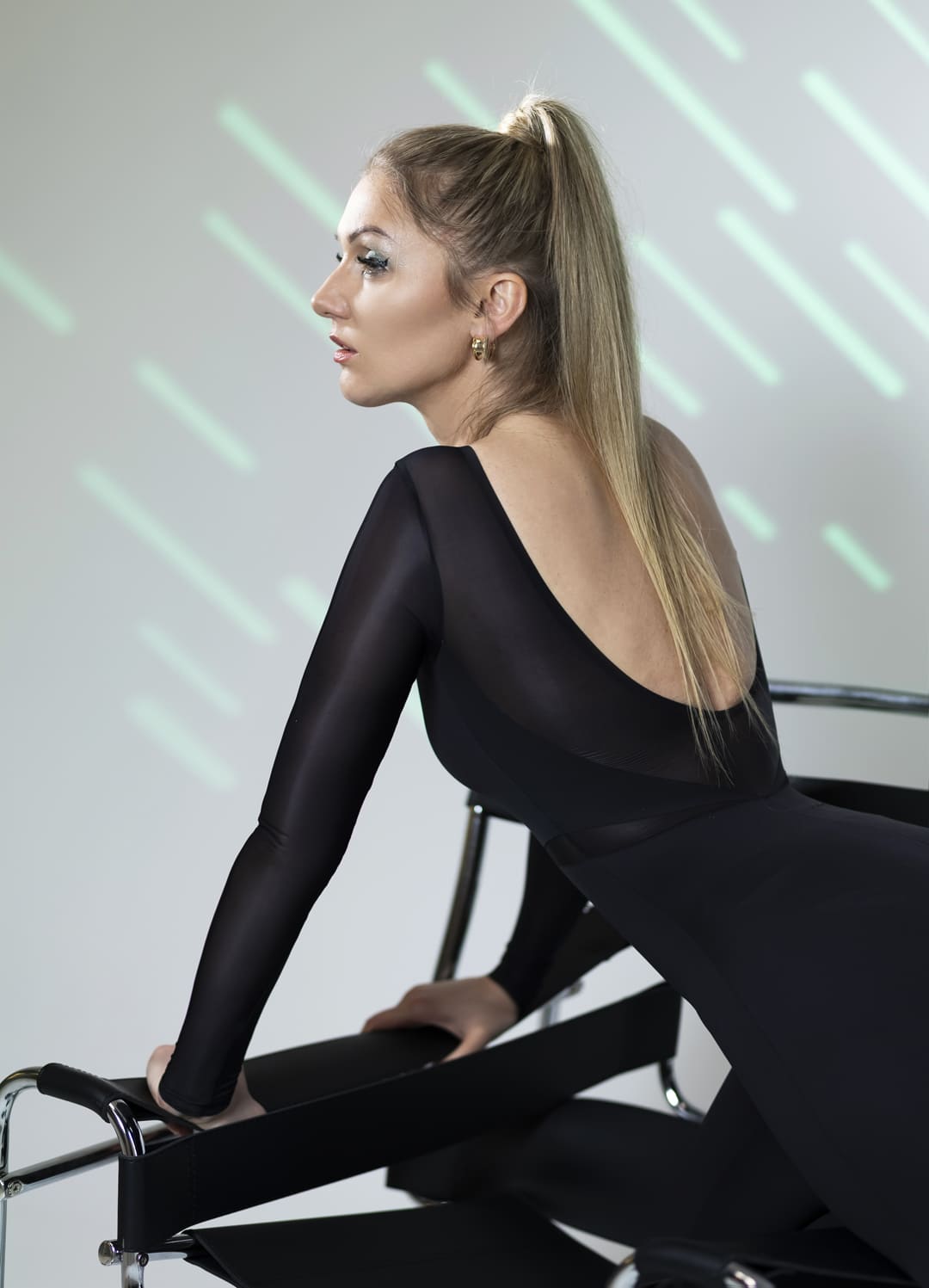
“LiMaVii” embodies your artistic and healing identity. What does this name signify for you?
LiMaVii:
LiMaVii is a sacred embodiment of my soul’s frequency — a name that emerged through deep inner listening and spiritual alignment with my true purpose. It’s not just a stage name; it’s a multidimensional vibration encoded in my full birth name: Lidia Magdalena Wiktoria Pozanska. Each syllable carries a unique resonance drawn from my three given names, representing the light, the feminine, and the sacred path of spirit.
Li — from Lidia — stands for Light, Life, and Liberation
It symbolizes the divine spark within, the force of vitality, and the liberating frequency of truth. In various traditions, “Li” is linked to cosmic order, the sacred pattern of the universe, and soul illumination. It’s the light I carry through my voice — a frequency that awakens and transforms.
Ma — from Magdalena — represents Mother, Matrix, and Mystery
“Ma” is one of the most ancient syllables, resonating with the Divine Feminine across cultures. It reflects the creative womb, nurturing intuition, and the healing essence of womanhood. As a vessel of feminine energy, I carry this vibration into every note I sing and every healing I facilitate.
Vii — from Wiktoria — is the Roman numeral VII (7), the number of Spirit, Ascension, and Divine Union
In sacred numerology, 7 represent the mystical path, spiritual wisdom, and alignment with soul destiny. “Vii” connects me with the journey of awakening — the bridge between earth and the divine. It also hints at soul contracts, twin flame energy, and the spiritual mission that we’re born to embody.
Together, LiMaVii becomes a mantra:
“The Light (Li) of the Divine Feminine (Ma) rises on the Path of Spirit (VII).”
Or more poetically:
“A light-born daughter of the Sacred Mother, walking the soul’s path toward union and remembrance.”
This name reflects my essence as a singer, healer, and guide — a woman whose voice carries frequencies of love, transformation, and spiritual remembrance into the world.

Your music is described as “transformational.” How do sound, intention, and presence specifically work together in your songs to facilitate healing or awakening?
Sound is vibration, and vibration is energy. My voice becomes a transmitter of intention—whether it’s healing, empowerment, or remembrance. Presence allows me to become an open channel. When these three align—sound, intention, and presence—they create an energetic field that touches people’s hearts beyond words.
Full Interview is Continued on Next Page
This interview is exclusive and taken by Namita Nayyar, President of womenfitness.net, and should not be reproduced, copied, or hosted in part or in full anywhere without express permission.
All Written Content Copyright © 2025 Women Fitness
Disclaimer
The Content is not intended to be a substitute for professional medical advice, diagnosis, or treatment. Always seek the advice of your physician or other qualified health provider with any questions you may have regarding a medical condition.
By Christina Flach, Celebrity Makeup Artist & Wellness Contributor
When people ask me for the real secret to glowing skin, shiny hair, and lasting energy, they often expect me to mention a high-end serum, treatment or my favorite concealer. But here’s the truth: the foundation of beauty doesn’t start in your makeup bag—it starts in your kitchen.
Everything we eat and drink becomes part of our skin, hair, nails, and overall wellbeing. When we nourish ourselves with real, whole foods, we’re not just feeding our bodies—we’re fueling our beauty.
Here are some of my favorite kitchen remedies and rituals that can help you look and feel your best, every single day.
Fats are not your enemy—they’re your beauty ally. Avocados, chia seeds, walnuts, and salmon are packed with omega-3 fatty acids that keep skin plump, radiant, and resilient. Vitamin E, found in olive oil and almonds, acts like an internal moisturizer, reducing dryness and protecting against sun damage.
Tip: Drizzle extra-virgin olive oil on vegetables, mash avocado into your morning toast, or sprinkle chia seeds into smoothies for a beauty-boosting meal.
Before you reach for coffee, start with a beauty elixir: warm water, lemon, a pinch of sea salt, and a teaspoon of olive oil. This hydrates, supports digestion, balances electrolytes, and nourishes your skin barrier first thing in the morning.

Dehydration shows up instantly on the face as dullness, fine lines, and puffiness. Staying hydrated throughout the day with water, herbal teas, or coconut water keeps skin fresh and luminous.
Leafy greens like spinach, kale, parsley, and arugula are packed with chlorophyll, vitamin C, and magnesium—nutrients that oxygenate your blood, improve circulation, and brighten your complexion.
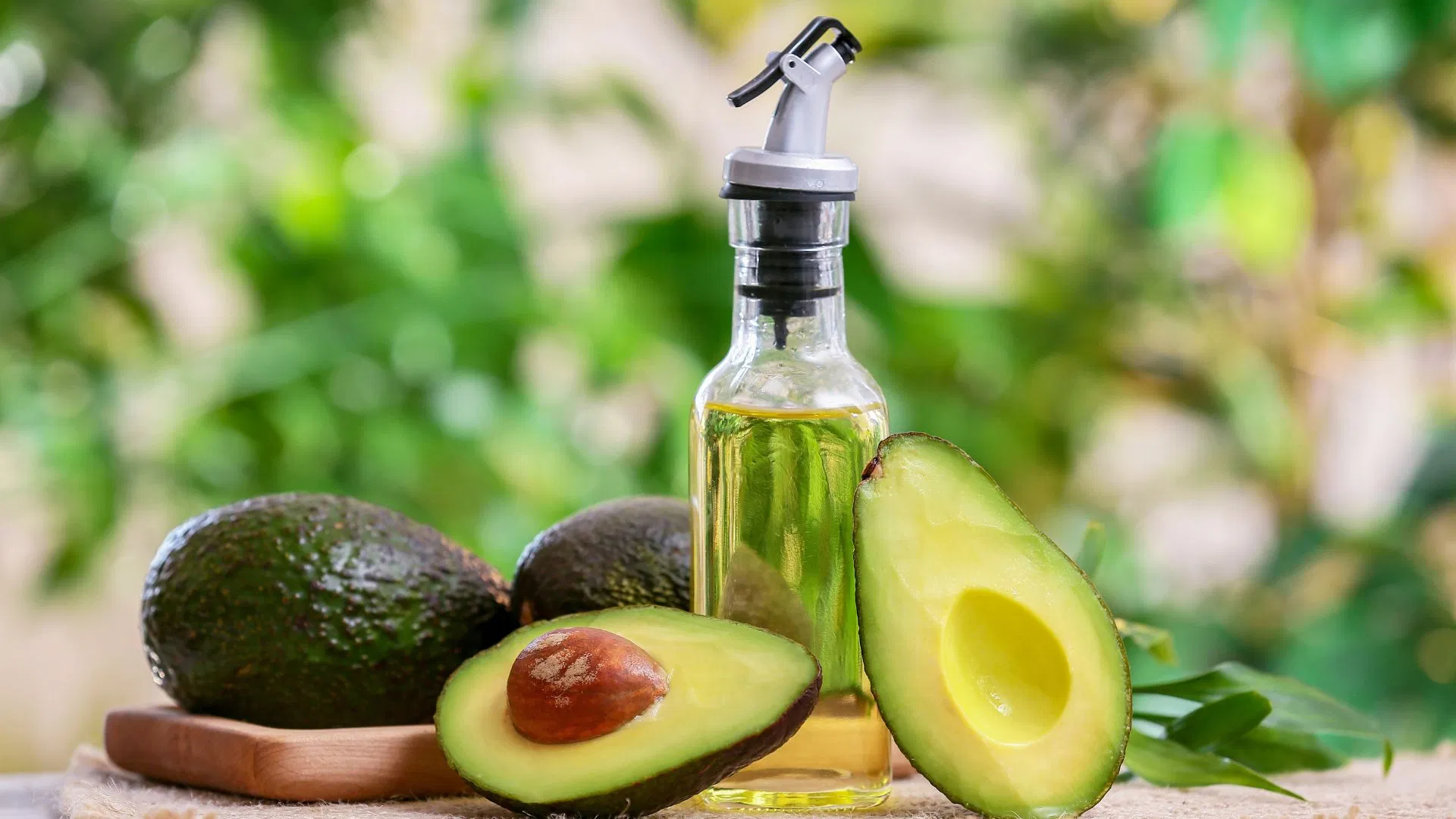
Recipe Idea: Try my favorite glowing green smoothie:
Blend with water or coconut water. Your skin will thank you!
Your kitchen is not just where meals are made—it’s where your beauty begins.
When it comes to beauty, your gut is often the unsung hero. A healthy gut microbiome—those trillions of good bacteria living inside you—plays a vital role in your skin, mood, and energy. When your gut is balanced, inflammation decreases, nutrients absorb more efficiently, and your skin reflects that harmony.
Poor gut health, on the other hand, often shows up on your face first—acne, dullness, bloating, and even premature aging.
Beauty Foods for a Happy Gut:
Pro Tip: Try not to drink large amounts of water during meals. Sipping small amounts is fine, but too much liquid can dilute stomach acids, slowing digestion and reducing nutrient absorption. Save your big hydration moments for before or after meals—your gut and your skin will glow!

Start your day with a ritual that hydrates, balances, and nourishes both your gut health and your skin glow:
1- Warm Water with Lemon & Sea Salt
Hydrates, balances electrolytes, and wakes up digestion.
2- Splash of Olive Oil
Supports gut lining and delivers a dose of healthy fats for glowing skin.
3- Green Juice or Smoothie
Blend spinach, cucumber, parsley, lemon, and ginger for antioxidants and detox support.
4- Probiotics
Whether from a supplement, yogurt, or kefir, probiotics restore balance in the gut and reduce inflammation that can cause breakouts.
5- Collagen Boost
Stir collagen peptides into your tea or coffee to strengthen hair, skin, and nails from the inside out.
6- Protein Power – Gut health experts recommend starting the day with 30 grams of protein to stabilize blood sugar, support muscle recovery, and keep energy steady all day long. Eggs, Greek yogurt, or a protein smoothie can set the tone for glowing skin and balanced digestion.
This simple five-step routine takes less than 15 minutes and sets the tone for a vibrant, radiant day—because when your gut is happy, your skin shines.

Collagen is the body’s building block for firm, elastic skin. Supplementing with collagen peptides can reduce fine lines and improve skin texture, while bone broth provides amino acids and minerals that repair tissues and support gut health—an essential part of clear, radiant skin.
Tip: Add a scoop of collagen peptides into your coffee, tea, or smoothie. Or sip warm bone broth, with fresh squeezed lemon, ginger and garlic as a nourishing afternoon pick-me-up.

Berries, green tea, cacao, and pomegranates are antioxidant superstars that fight free radicals and protect your skin from environmental stress and UV damage. These foods don’t just slow down aging—they also give skin that lit-from-within radiance. Snack Idea: Mix blueberries, walnuts, and a square of dark chocolate for a satisfying, beauty-boosting treat.
True radiance is a combination of nutrition, lifestyle, and self-care. Pair your kitchen remedies with these rituals:

Your skin won’t glow if your brushes are hiding yesterday’s makeup, oil, and bacteria. Dirty brushes can clog pores, trigger breakouts, and dull your overall look. The good news? You don’t need fancy cleansers— your kitchen already has what you need.
DIY Brush Cleaner Recipe:
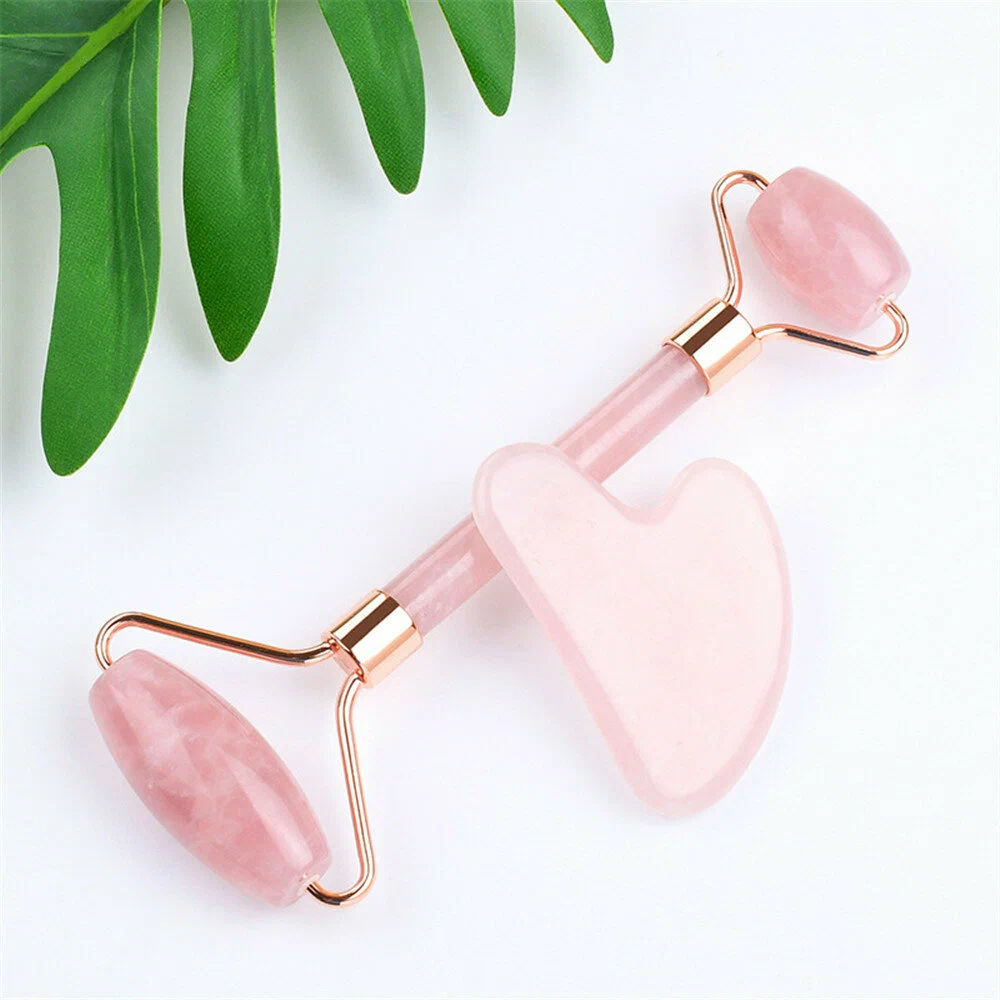
Swirl your brushes in the mixture, rinse thoroughly with warm water, remove excess water with a towel, reshape, and air-dry. Clean brushes = clearer skin + flawless makeup.
Keep your face roller cold for instant glow!
It’s like a mini spa treatment, straight from your kitchen to your skin.
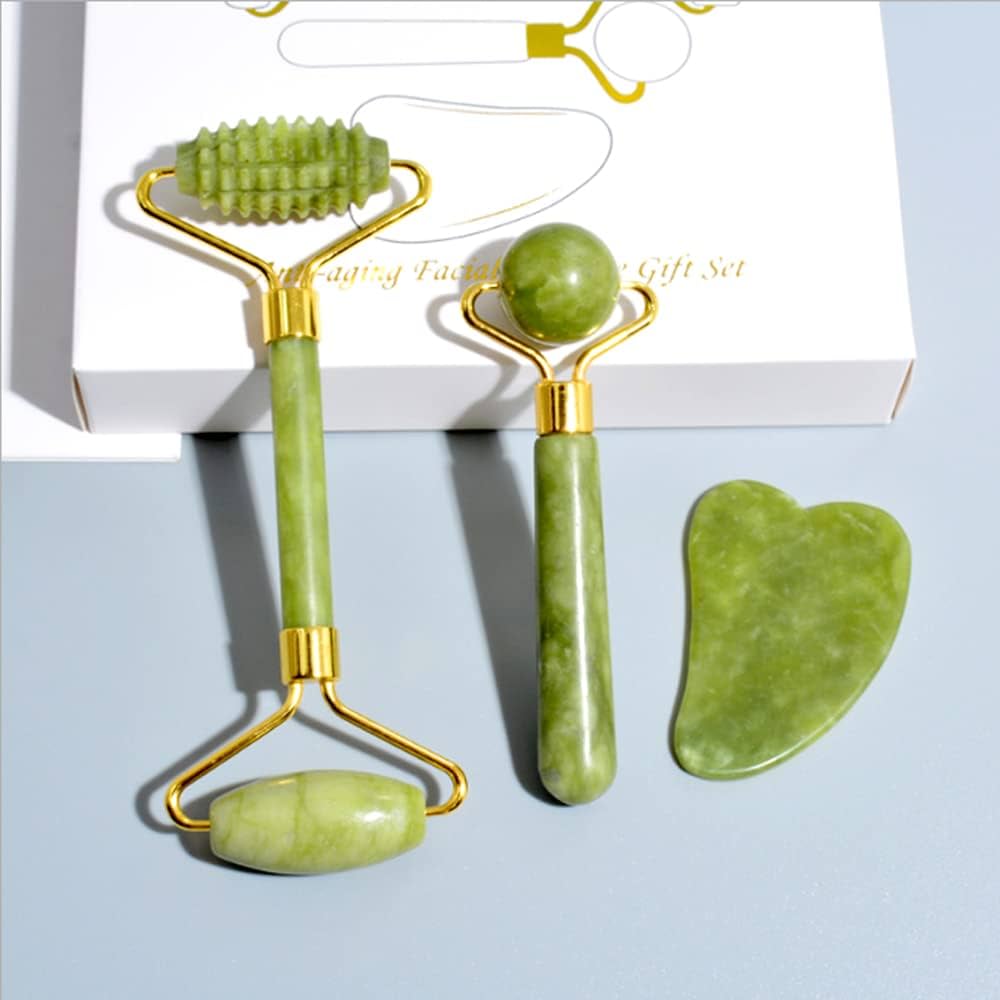
As a makeup artist, I love transforming people with the right foundation or lipstick. But no product compares to the glow that comes from nourishing your body with love and care. I’ve been guiding my clients to understand that gut health, nutrition, sleep, skincare, and overall wellness are the true foundations of beauty—because when you care for the inside, you naturally become the best version of yourself on the outside.
Your kitchen is not just where meals are made—it’s where your beauty begins. Every smoothie, salad, or sip of water is a small act of self-care that radiates outward. And when you combine healthy nutrition with mindful rituals, you don’t just look your best—you feel your best.
Because true beauty isn’t about covering up. It’s about shining from within
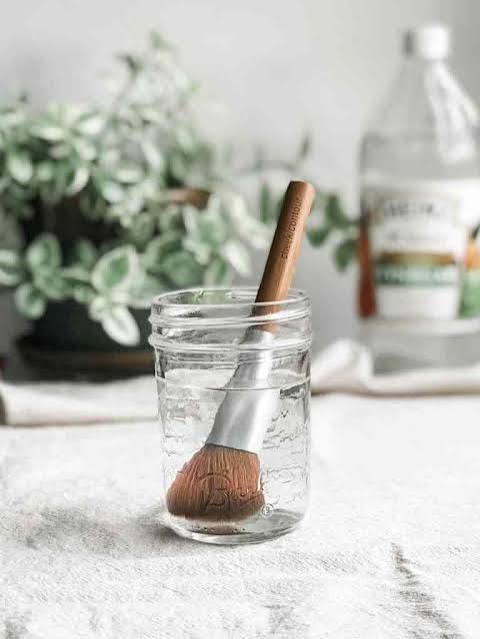
5 Must-Have Foods Always in My Pantry
Keep these staples on hand, and you’ll always have the building blocks for beauty from the inside out.
The truth is, the best beauty secrets aren’t locked away in luxury bottles—they’re right in your kitchen. From hydrating elixirs and gut-loving greens to collagen-rich broths and simple rituals like cleaning your brushes or rolling your face cold, everyday choices add up to flawless skin, positive energy, and inner confidence that shines.
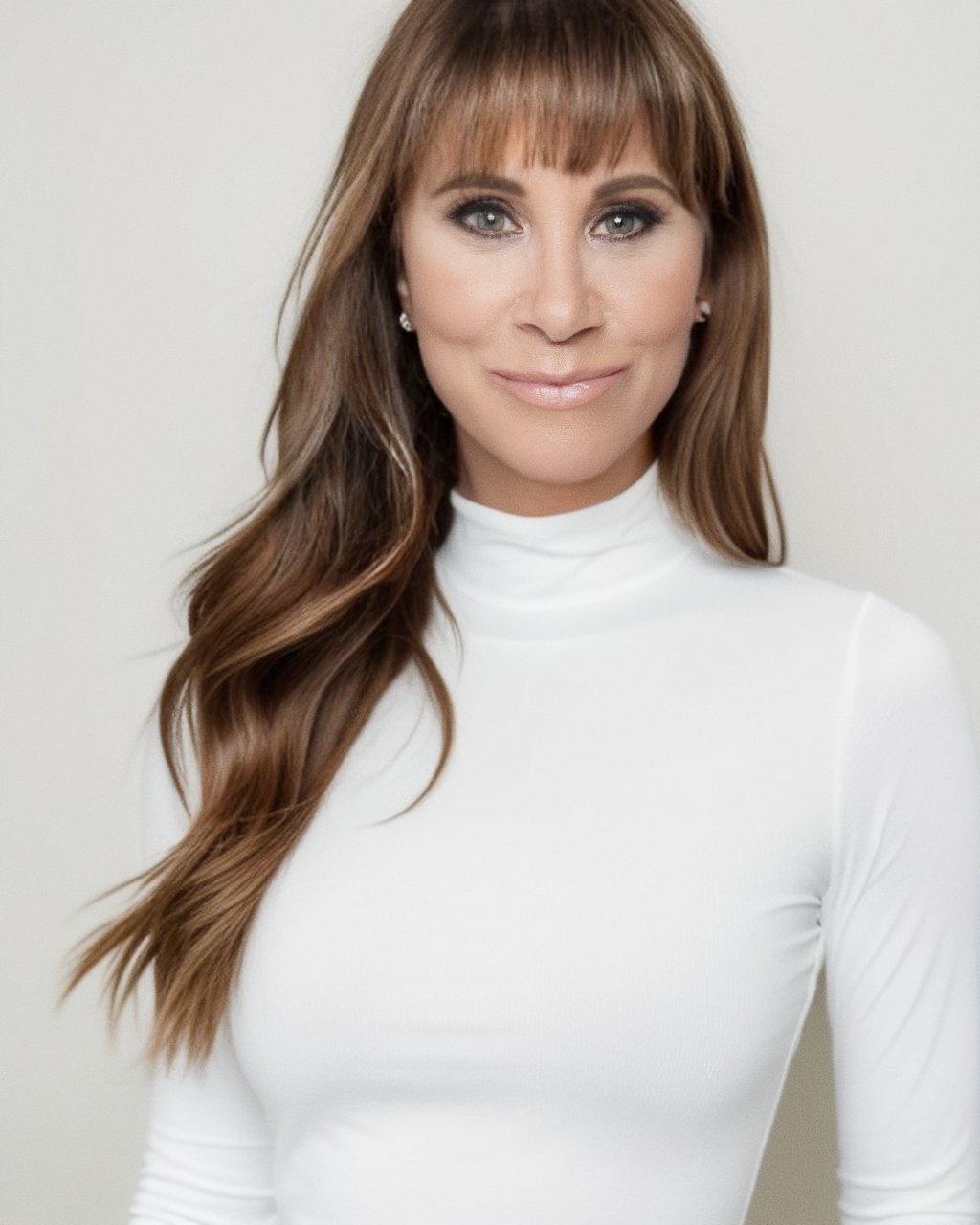
Looking like the best version of yourself doesn’t mean perfection—it means creating daily habits that honor your body inside and out. Consistency is everything! When you nourish your gut, feed your skin with whole foods, rest deeply, and enjoy the little rituals of self-care, you’ll glow in ways no highlighter can fake.
Because beauty isn’t just about how you look—it’s about how you live.
Disclaimer
The Content is not intended to be a substitute for professional medical advice, diagnosis, or treatment. Always seek the advice of your physician or other qualified health provider with any questions you may have regarding a medical condition.
Castor oil has been in medicine bags and beauty routines since ancient Egypt wasn’t ancient — but now, it’s having a big moment on social media. TikTok and Instagram are full of people swearing it can clear up skin to boost hair growth, fix bloating or even remove toxins by pouring it into your belly button.
But do these viral trends have any real science behind them? Experts say it’s smart to check the evidence before slathering anything new on your skin or adding it to your routine.
We asked dermatologists, a hair restoration specialist and a pharmaceutical researcher to share what castor oil really can and can’t do.
What is castor oil?
Castor oil is a vegetable oil from the seeds of the Ricinus communis plant. For thousands of years, it’s been used for beauty treatments and as a strong laxative and is FDA-approved for that purpose. It’s very thick, has little to no scent and is packed with a fatty acid called ricinoleic acid.
Castor oil in the belly button (navel pulling)
One trending use is “navel pulling,” a traditional Ayurvedic practice that involves people putting castor oil in their belly button. TikTok posts claim it can detox the body, improve digestion, ease cramps, help you sleep or even relieve menstrual pain.
But experts say this practice has no solid scientific backing. “There is no scientific evidence to support the idea that applying castor oil to the belly button (navel pulling) delivers systemic health or skin benefits,” said board-certified dermatologist Tia Paul, M.D.
“Trendy uses such as putting castor oil in the belly button or applying castor oil packs on the skin are based on anecdotal claims and have no solid scientific support,” added John-Paul Andersen, Ph.D., a pharmacologist.
While using a little castor oil on healthy skin is usually low-risk, doctors caution that it’s unlikely to deliver the dramatic results seen online.
Castor oil for hair and skin
People use castor oil in skincare routines as a moisturizer, acne treatment or dry skin soother. It’s also a popular addition to hair masks with claims that it can help your hair grow faster, look shinier and prevent breakage. Some people say swiping the oil on your eyebrows and eyelashes makes them look thicker and grow faster.
Here’s the good: Castor oil does contain ricinoleic acid, which can help hold moisture and may have mild anti-inflammatory properties, said Paul. That can make it soothing for dry, rough skin. “However, there is no large-scale clinical research proving it improves chronic skin conditions or delivers long-term benefits,” she added.
Paul also noted it can clog pores, especially in oily or acne-prone skin. But if you have skin on the drier side, board-certified dermatologist Janet Vafaie, M.D., FAAD, said it could be worth trying. “Castor oil is great for dry skin and cuticles due to its ability to seal in moisture and act like a protective barrier.” Just stick to small amounts and avoid your face, she said, since its thickness can lead to clogged pores.
Castor oil for hair growth and scalp use
Hoping for longer, thicker hair? Experts say you should manage your expectations. “There’s no high-quality clinical data showing that castor oil truly promotes hair growth in the way people online claim,” said hair restoration specialist Ross Kopelman, M.D. “That doesn’t mean it’s useless — but it’s definitely not a miracle solution.”
While castor oil can help condition dry hair and seal in moisture, it won’t prevent or reverse hair thinning. “Castor oil is more of a moisture-sealant than a magic growth solution,” said Vafaie.
But be careful with how you use castor oil on your scalp. “Castor oil is very thick and occlusive, which means it can trap bacteria or clog hair follicles if used too often or left on too long,” warned Kopelman. “I’ve treated patients who developed folliculitis [inflamed, pimple-like bumps on the scalp] from overuse.”
He suggested applying just a small amount, testing how your scalp reacts, and washing it out well.
Castor oil packs and pain relief claims
Another popular trend is using castor oil packs, soaking a cloth in the oil and placing it on the skin to ease cramps, joint pain or inflammation. Wellness blogs and influencer videos often claim anti-inflammatory or antimicrobial benefits, but they don’t provide much evidence.
Experts say that’s because there’s not much science to support these claims. “Most evidence for castor oil’s anti-inflammatory benefits comes from small-scale animal or lab studies and anecdotal reports, so these claims are not conclusively proven in humans,” said Andersen.
He added that, while castor oil does have some mild antimicrobial properties, it shouldn’t replace medical treatments.
Castor oil for constipation
Of all its uses, castor oil’s role as a laxative is the one most supported by research. It’s FDA-approved as a stimulant laxative for occasional constipation. “Castor oil’s main active ingredient, ricinoleic acid, is broken down in the gut and activates prostaglandin receptors, causing intestinal muscles to contract and push stool out,” explained Andersen.
It works well, but experts warn it’s best used only for short-term relief under medical supervision because it can cause cramping, diarrhea and dehydration. And if you’re pregnant, avoid it altogether since it can trigger uterine contractions.
Should you use castor oil?
Castor oil has some proven uses, like relieving occasional constipation and helping moisturize dry skin. But many of the buzzy claims online don’t have solid science behind them.
Our experts all agree: Before using castor oil on your body or in your wellness routine, talk with a healthcare provider (HCP). “It’s very important to seek medical advice before using castor oil for health purposes,” said Andersen.
Your HCP can help you figure out if castor oil is right for you and suggest products that might be safer or more efficient.
Related Articles Around the Web
By Cathy Madeo
A few mindful moves can ease stress, boost circulation, and help you feel reset once you land.
Travel can be exhausting and throw us off schedule, just when we want to feel our best. We often go on vacation hoping to reset, only to return home even more tired than when we left. It’s no wonder traveling comes with many obstacles. Do any of these sound familiar?
● Anxiety from fear of flying
● Headaches and fatigue are caused by dehydration from the low humidity in airplanes
● Fluid retention in the legs and feet caused by cabin pressure and long periods of sitting
● Nausea from motion sickness

Here are some simple ways to combat the travel struggles we’re all so familiar with:
Breathing Exercises:
Why: If you’re at the airport feeling stressed or anxious about flying, this simple breathing exercise can tap into your parasympathetic nervous system in as little as two minutes.
Try it: Breathe in for a count of four, out for a count of six. Do this for at least two minutes.
Walking:
Walking is one of the best ways to keep the blood flowing and our joints mobile. You might feel tired and tempted to sit down, but fatigue is often caused by lack of sleep or dehydration. Drink water and take your steps!
Try it: If you have a layover, instead of sitting in the waiting area, use the time to walk.
Calf Raises:
These help prevent fluid retention in your ankles and legs.
Try it: Shift your weight to the balls of your feet and lift your heels off the ground. Set your heels back down. Repeat several times.
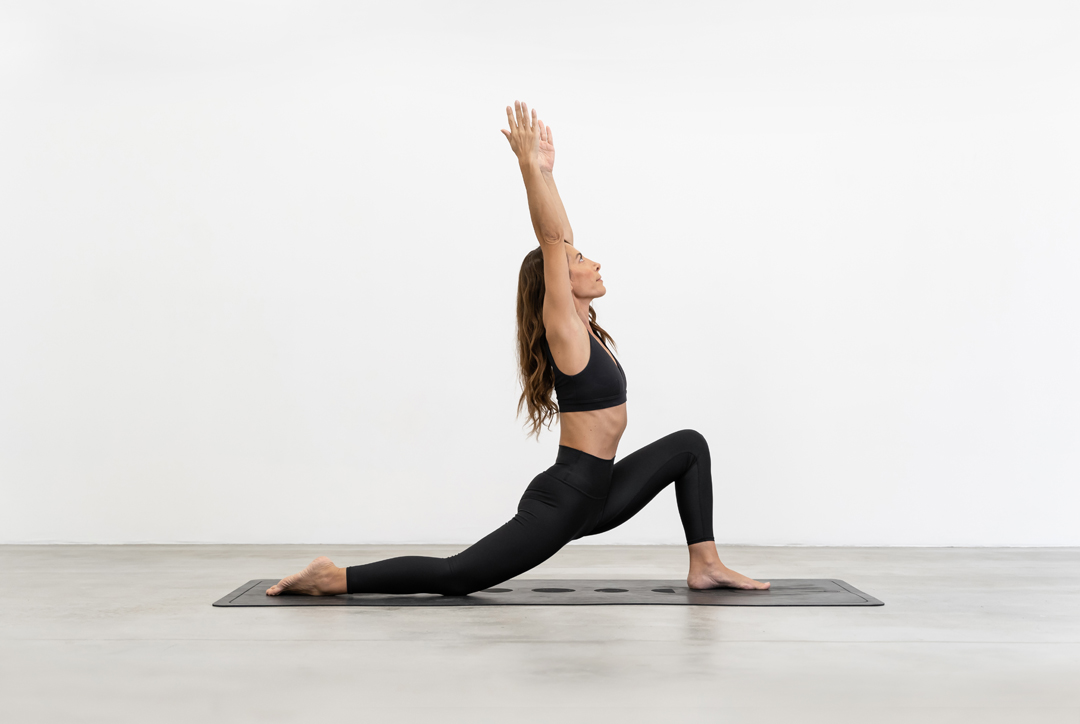
Seated Cat/Cow
Loosens the spine and helps combat hunched posture.
Try it: Place your hands on your thighs, inhale, extend your spine; exhale, tuck your chin in toward your chest, and round your spine. Repeat a few times.
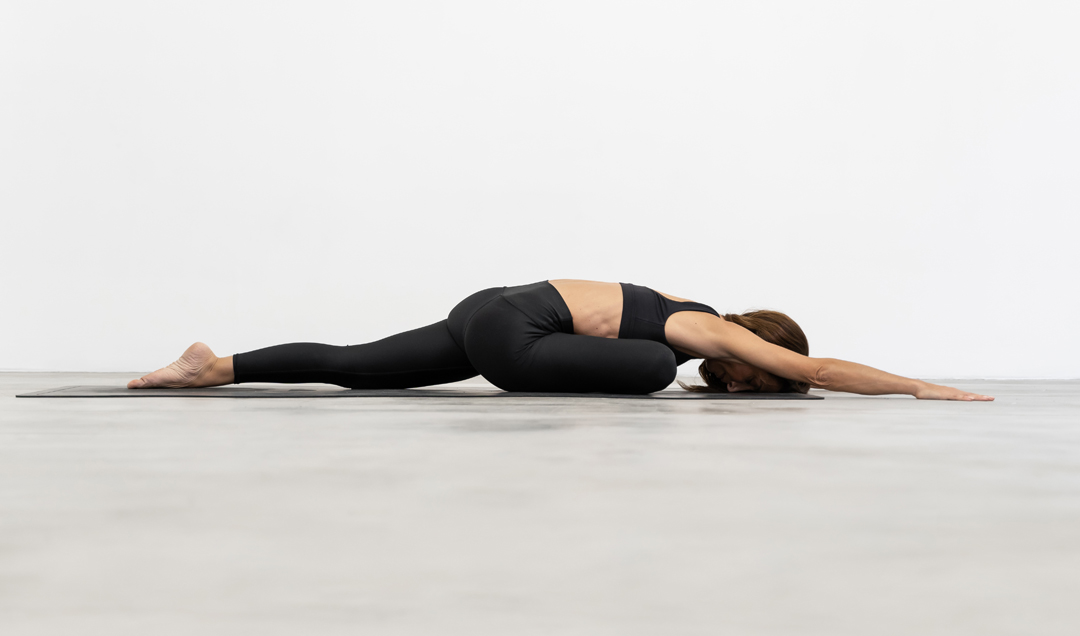
Seated Twist
Stretches the chest and lower back, which both get tight from prolonged sitting.
Try it: Exhale, turn your chest to the right, rotate your spine, and inhale to release. Switch sides.
Seated Figure-Four
Relieves sciatica and stretches tight hips.
Try it: Place one ankle on top of your opposite thigh in a figure four position. Fold over your legs to release your lower back.

Pro traveler tip:
Set a timer for every hour. Get up, stretch, or walk the aisle if the seatbelt sign is off. Before you sit back down, do 15-20 calf raises to keep circulation flowing.
Undo stiffness from long travel days with these six simple yoga poses:
Low lunge
Opens tight hip flexors and resets posture after sitting.
Try it: Step one foot forward, lower your hips, and reach your arms overhead.
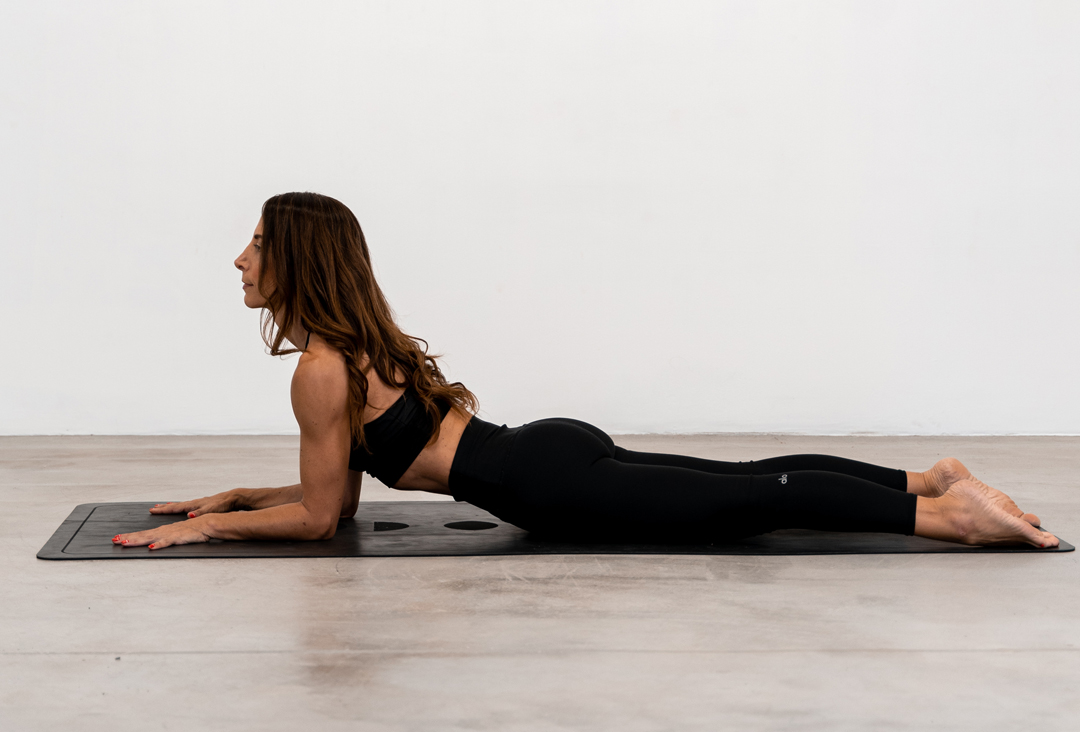
Pigeon Pose
Relieves sciatica and low back stiffness.
Try it: Rotate your front leg away and bend the knee, lower pelvis, and extend the opposite leg back, fold over your bent front leg.
Lizard Lunge
Stretches the groin, inner thigh, and hip flexors.
Try it: From a lunge position, heel-toe your front foot as wide as your mat and lower your hips, release your forearms to the ground, reach your chest and head forward.
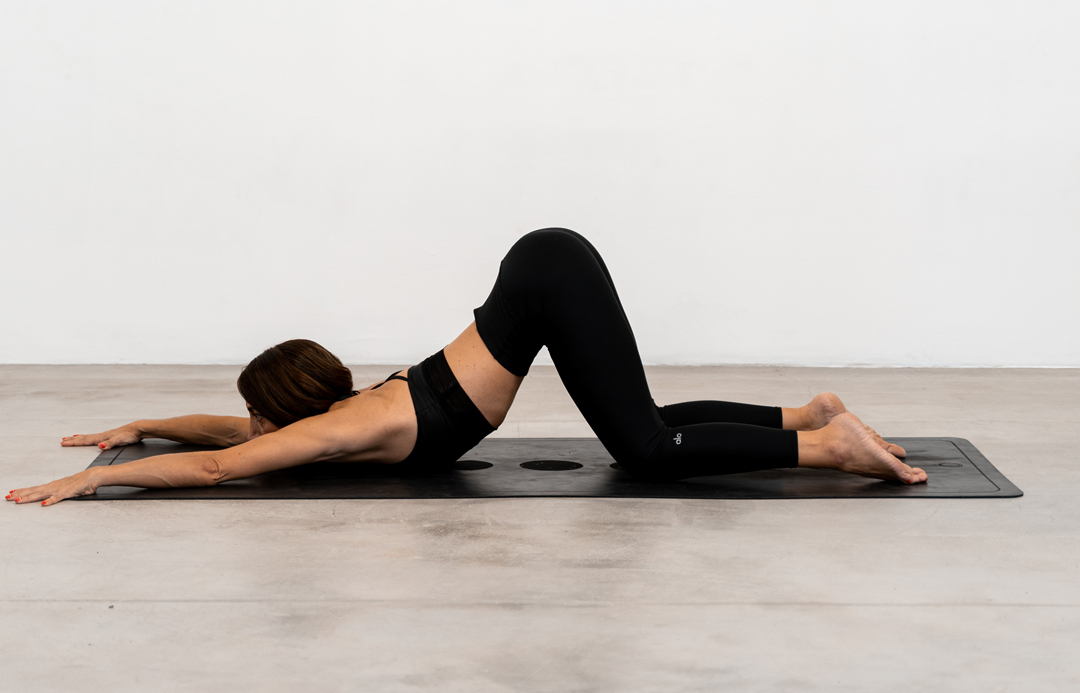
Sphinx Pose
Stretches the front body, chest, and hip flexors.
Try it: Lie on your belly and prop your body up on your forearms, drawing your chest forward.
Puppy Pose
Stretches under arms, chest, and extends spine.
Try it: From a table-top, walk your hands all the way out until your head or chest reaches the ground, keeping your hips stacked over your knees.
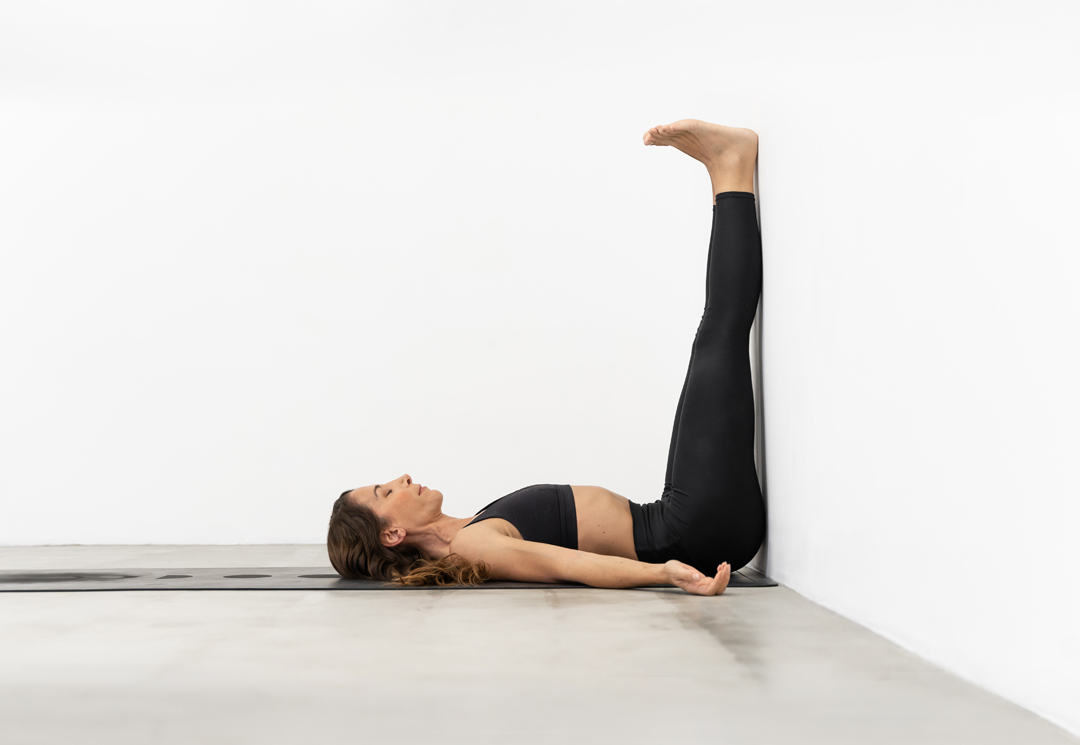
Legs Up The Wall
Improves circulation.
Try it: Lie on your back, straighten your legs up against a wall.
Even small movements can make a big difference when traveling! A few simple practices can keep your body open, your circulation flowing, and your mind calmer, so you can actually enjoy your trip and feel better coming home.
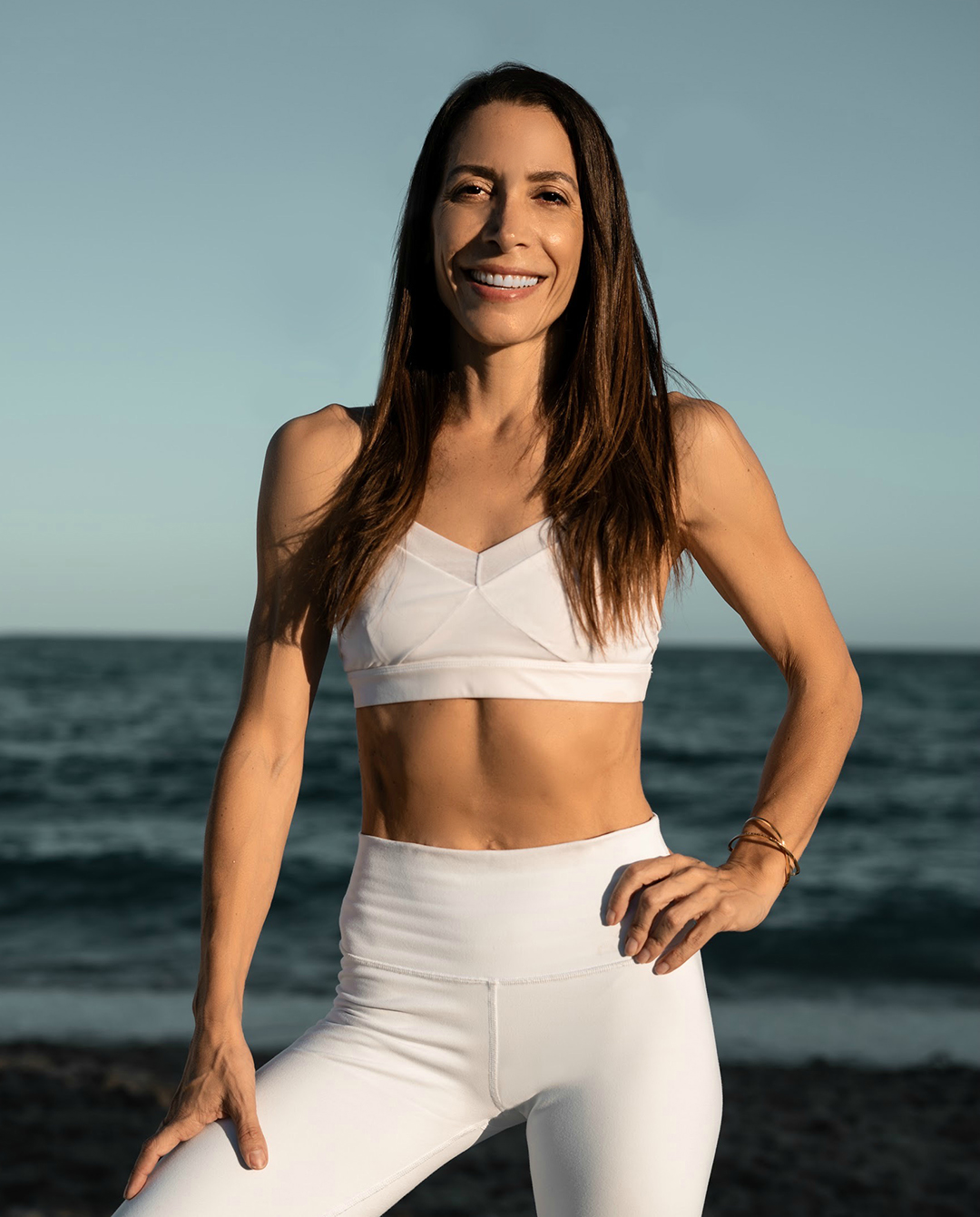
Cathy Madeo is a yoga expert and founder of Cathy Madeo Yoga, a global online yoga school educating and empowering thousands of yoga students and teachers worldwide with her online courses and Yoga Teacher Trainings. You can learn more at https://www.cathymadeoyoga.com/ and follow her on Instagram @cathymadeoyoga
Photographer credit Irving Martinez https://lookitsirving.com/
Disclaimer
The Content is not intended to be a substitute for professional medical advice, diagnosis, or treatment. Always seek the advice of your physician or other qualified health provider with any questions you may have regarding a medical condition.